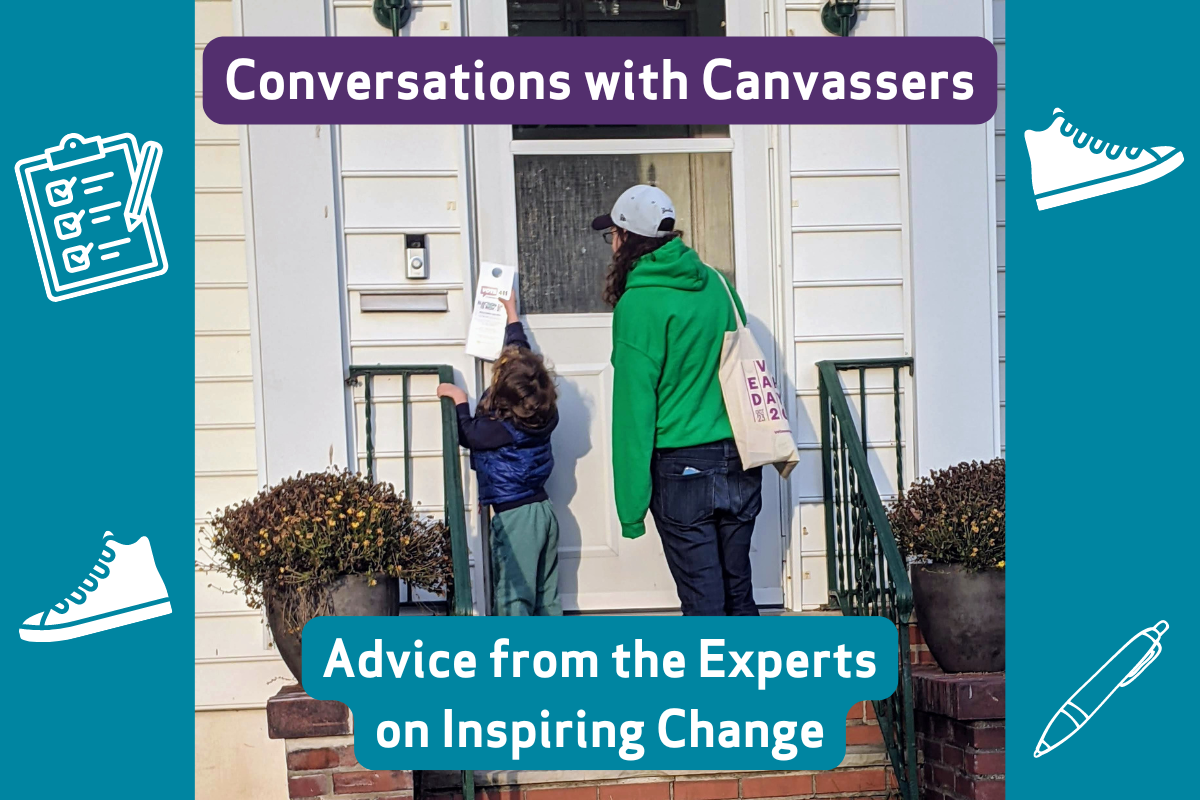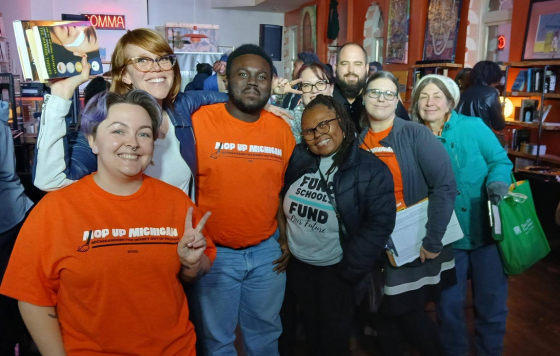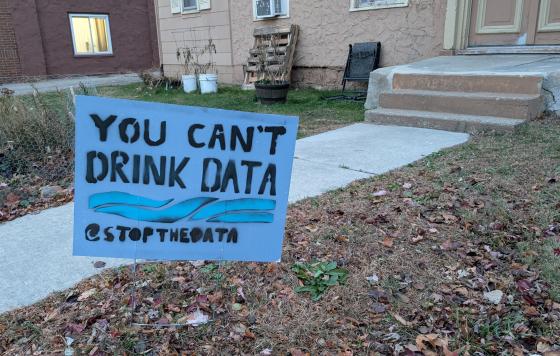
By Lucy Belknap, an intern with Clean Water Action in Massachusetts
Have you ever opened your door to a greeting from an enthusiastic canvasser from Clean Water Action? Canvassing remains one of the most powerful tools in environmental and political advocacy. But what makes it so effective? With Election Day approaching, I spoke to Clean Water staff members with canvassing experience to learn more about their work, and to glean a few tips for how to inspire people in our own lives to take political action.
Amber Schmidt, the New England Zero Waste Specialist, has ten years of canvassing experience under her belt, and she emphasized the rewarding nature of the work. The success of her first campaign, which was for a single-use plastic bag ban, was “where I really started to notice that the small interactions I was having each day really did accumulate into a much bigger impact,” she explained. “I started to see the very real, tangible solutions to the issues I was talking to people about and how even just the few minutes it took them to write a letter or contact their representatives made a difference in the long run.”
As Clean Water Action National Canvass Coordinator Chris Bathurst explained to me, given that the goal is to build support as quickly as possible, effective Clean Water canvassing is less about convincing people to care about an issue, and more about convincing people who already care that their participation will have a measurable impact. And that impact ranges from the passage of environmental laws to the election of environmental champions.
Take, for instance, the 2016 New Hampshire Senate race, where Clean Water canvassed tirelessly for Maggie Hassan (D), who went up against Republican incumbent Kelly Ayotte. The result? Hassan won by just 1,017 votes, a number considerably smaller than the number of doors knocked on by our canvassers.
Shamar Vernon, a canvasser from New Jersey who traveled to New Hampshire, recalled the experience of being on the ground in a close election. He built common ground with residents around environmental issues, and then encouraged like-minded neighbors to commit to voting for Hassan, the pro-environment candidate. He agreed with Bathurst: “The job is not to debate or convince,” he wrote to me. “It's really to find the people that care and help them get involved. This meant each canvasser could reach more people and have a bigger impact.”
So, what can we learn from these experts on face-to-face conversations about politics? I asked each canvasser for advice on how to convince others to take action. Here’s what they came up with:
- Problem-solution-strategy. Bathurst outlined the most basic procedure for effective canvassing conversations: describe the problem the listener already agrees with, turn to its solution, and then introduce the strategy requiring the listener’s involvement to make that solution happen. Starting from the common ground of the problem makes it easier for the listener to stick with you through the strategy.
- Emphasize positive momentum. Vernon explained that the hardest signature to get on the clipboard when door knocking was often the first, but as the list got longer, people noticed their neighbors getting involved and were more willing to take action themselves. Highlight the already-existing momentum around an issue, from the growing number of supporters to the previous victories, to inspire first-time activists.
- Be prepared with action items. Big environmental issues can easily feel overwhelming and impossible to tackle. But broader progress is simply the accumulation of small steps, so focus on encouraging others to join you in taking these steps—from voting for an environmental champion to writing letters in support of a green bill to donating to organizations like Clean Water who will advocate for this progress on their behalf.
- Prepare yourself with optimism. It’s hard to avoid cynicism in politics these days, but often a one-on-one conversation with another person filled with passion and hope is exactly what that person needs to counteract their disillusionment and feel a little more positive.
Often when the environment comes up in our daily lives, the tone can quickly get gloomy. But if the experiences of canvassers tell us anything, it’s that translating people’s concern into action is both less difficult and more effective than it seems. If you’ve already been inspired to take action yourself, the next step is to tell a friend, a family member, or a neighbor! Chances are they care just as much as you and just need that extra push of encouragement.


